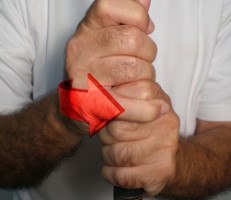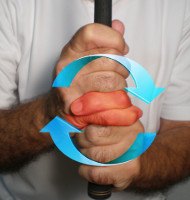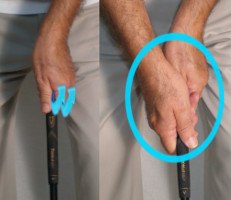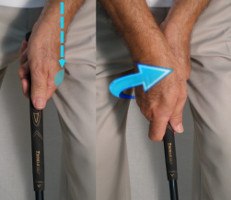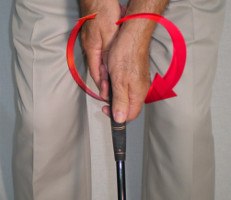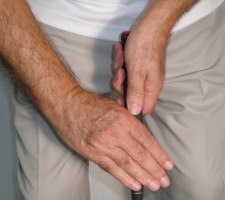Pros and Cons of Every Golf Grip Style |
Best Grip? Overlapping vs Interlocking |
Grip style: Interlocking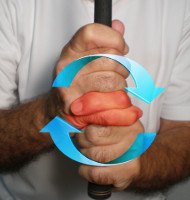 |
Hand position: strong |
Putting grip style / hand position: Reverse overlap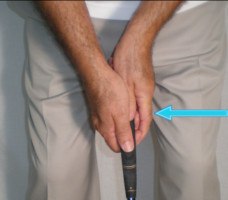
|

Ross Fisher’s grip is right in line with the 21st century professional model: strong enough to generate plenty of distance, but not too strong to control.
The Englishman, a five-time European Tour winner who plays sparingly in the United States, is a steady performer who earned a 2010 Ryder Cup bid. That season capped a four-year run in which Fisher claimed a victory each season.
Notable for its old-school hip turn and leg action, Fisher’s swing is founded on an excellent grip. His hands fit comfortably on the handle in matching positions. The left is turned so that the “V” between thumb and forefinger points to his right shoulder; the right hand “V” runs parallel to this line.
The tall lanky pro, who goes 6’3”, 168 pounds, hammers his drives better than 290 yards on average. Fisher’s strength, however, is his iron play. He placed fifth in Europe for greens in regulation in both 2013 and ’14.
Once on the greens, well, let’s just say his results could be better. Ross Fisher’s grip doesn’t appear to be an issue, though. His large hands look relaxed and comfortable on the putter, joined in classic reverse overlap style with the left wrist “uncocked.”
It’s a putting grip that works for some of the game’s greatest, including Tiger Woods and Rory McIlroy. Fisher’s modest success with the flat-stick is likely a matter of confidence more than technique. Yes, even the world’s best struggle with golf’s mental side – especially on the greens.
